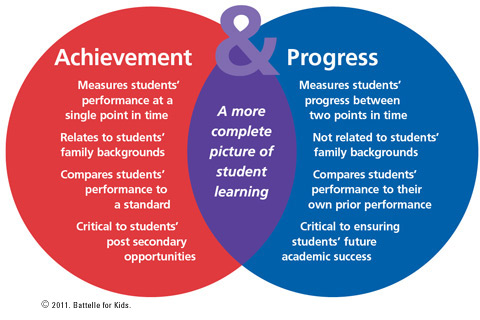Progress vs. Achievement
In education, the words "achievement" and "progress" are often used interchangeably. However, their meanings are very different.
Achievement is measured by students' performance at a single point in time and how well those students perform against a standard. Achievement has typically been measured by students' performance on state tests and how well students perform in relation to state standards and the "bar" established for proficiency. Districts', schools' and teachers' performances have been determined almost exclusively by the number of students who pass the state tests.
Progress is measured by how much "gain" or "growth" students make over time (i.e., year-to-year, semester-to-semester, etc.). One way to think of academic progress is in terms of a child's growth chart. A growth chart shows a child's height at age two, three, etc. These data points can be plotted to display that child's physical growth over a specific period of time.
By measuring students’ academic achievement and progress, schools and districts will have a more robust, comprehensive picture of their effectiveness in raising student performance.

